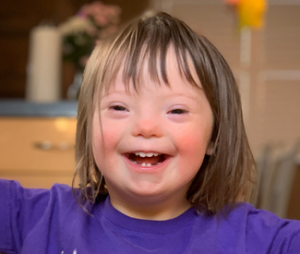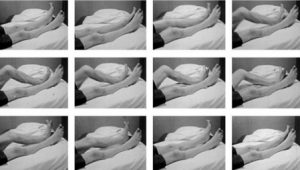According to The Migraine Institute, over 30 million Americans battle migraine headaches. They affect an estimated 40+% of females at some point in their lives, and about 20% of males. At any given point in time, up to a quarter of US households have at least one member impacted by migraines.

Migraines can have significant negative effects on quality of life (QOL). They are ranked as the #6 leading cause of disability worldwide.
Here, we’ll discuss what migraines are, how they’re diagnosed and treated, and how they can manifest in children.
What are migraines?
Migraines are considered “blood vessel headaches” because they are triggered by constriction of the blood vessels. Their characteristic trait is a throbbing or pulsing sensation, sometimes extremely intense, that tends to affect one side of the head.

In addition to the physical pain, migraines can also cause other symptoms such as:
- Neck stiffness
- Frequent yawning
- Mood changes
- Increased urination
- Nausea
- Vomiting
- Extreme sensitivity to sound and light
Migraines often cause sensory disturbances known as “auras.” The symptoms a patient experiences depend on whether their migraine is accompanied or not by auras.
Migraines with vs without auras
Auras are changes in sensations that occur before a migraine begins. They can impact any of the five senses. Auras can appear up to 48 hours before the migraine begins. Around 20% of migraine patients experience auras.
Migraines without auras are called common migraines, while migraines with auras are known as classic migraines. Up to a quarter of all migraines include the sensory disturbances associated with auras. Individuals must meet certain criteria in order to be classified with common or classic migraines.
Frequently encountered examples of auras include:
- Muscle weakness or tingling (“pins and needles”)
- Ringing in the ears
- Dizziness
- Visual disturbances (sometimes described as “zigzag lines”)
- Light sensitivity
- Hot flashes
- Confusion

Types of migraines with aura
Let’s survey a few types of migraines with aura:
- Classic migraine (with headache as a symptom or not)
- Hemiplegic migraine (a type of migraine that causes weakness on one side of the body (called hemiplegia)
- Retinal migraine (causing vision changes in one eye before onset of headache)
- Migraine with brainstem aura (characterized by the aura located at the brainstem)
Can children get migraines?
Data suggests that migraines are most common in patients between the ages of 35-45. However, children do get migraines as well. Around 10% of children between the ages of 5-15 experience migraines as well as around 28% of teenagers in the United States.
The good news is that children’s symptoms, in many cases, are less severe and less long-lasting than usually seen in adults.
Some studies suggest that childhood colic might be associated with a higher frequency of migraines in children.
Childhood migraines are commonly bilateral but may be unilateral. A child’s behavior may depict whether they are experiencing photophobia and/or phonophobia. Occipital pain in children is rare and usually leads to further physician evaluation. However, there is no specific test used in diagnosing migraine headaches.
Children sometimes get migraine precursors that include cyclic vomiting, cyclic abdominal pain, and cyclic vertigo
How are migraines diagnosed?
Oftentimes, migraines go undiagnosed in children and adults.
To make a diagnosis, a neurologist must identify a pattern of recurring headaches along with any of the other associated symptoms that we explored earlier.
If you experience the symptoms of migraines, your doctor might order an MRI or CT scan as a way to rule out other potential conditions causing the headaches or associated symptoms.
If one experiences frequent headaches, it is important to keep a log of the frequency, so that a physician may be better able to diagnose the problem.
How are migraines treated?
Several medications are shown to provide relief from migraine symptoms:
- Dihydroergotamine
- Lasmiditan
- Anti-nausea drugs
- Over-the-counter pain relievers
- CGRP antagonists
- Opioid medications
Other medications are shown to potentially prevent migraines from developing in the first place:
- Botox injections
- CGRP monoclonal antibodies
- Antidepressants
- Blood pressure-lowering medications
- Anti-seizure drugs
Some of these drugs carry the risk of dependency and/or potentially severe side effects, as well as possible interactions with other drugs. A neurologist will advise each patient of the risks and potential benefits of these drugs on a case-by-case basis.
Contact Child Neurology Center of Northwest Florida to learn more about migraines
Knowledge is power. If a loved one suffers from migraines and you are interested in learning more about potential treatment options, please don’t hesitate to contact Child Neurology Center of Northwest Florida.
Our industry-leading expert staff is always ready to discuss migraines and their treatments with our Northwest Florida neighbors, or any other concerns you might have related to pediatric brain and nervous system health.




